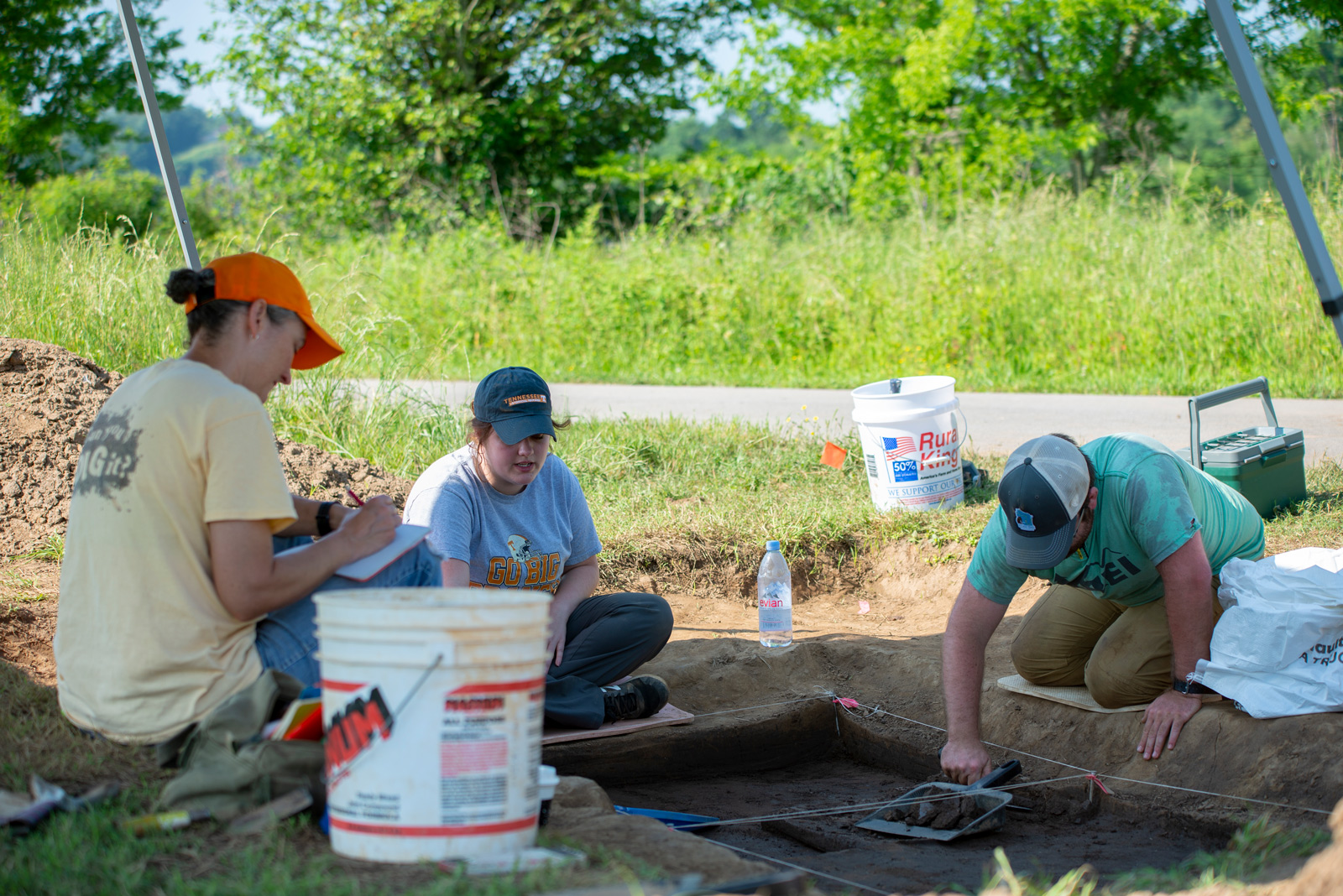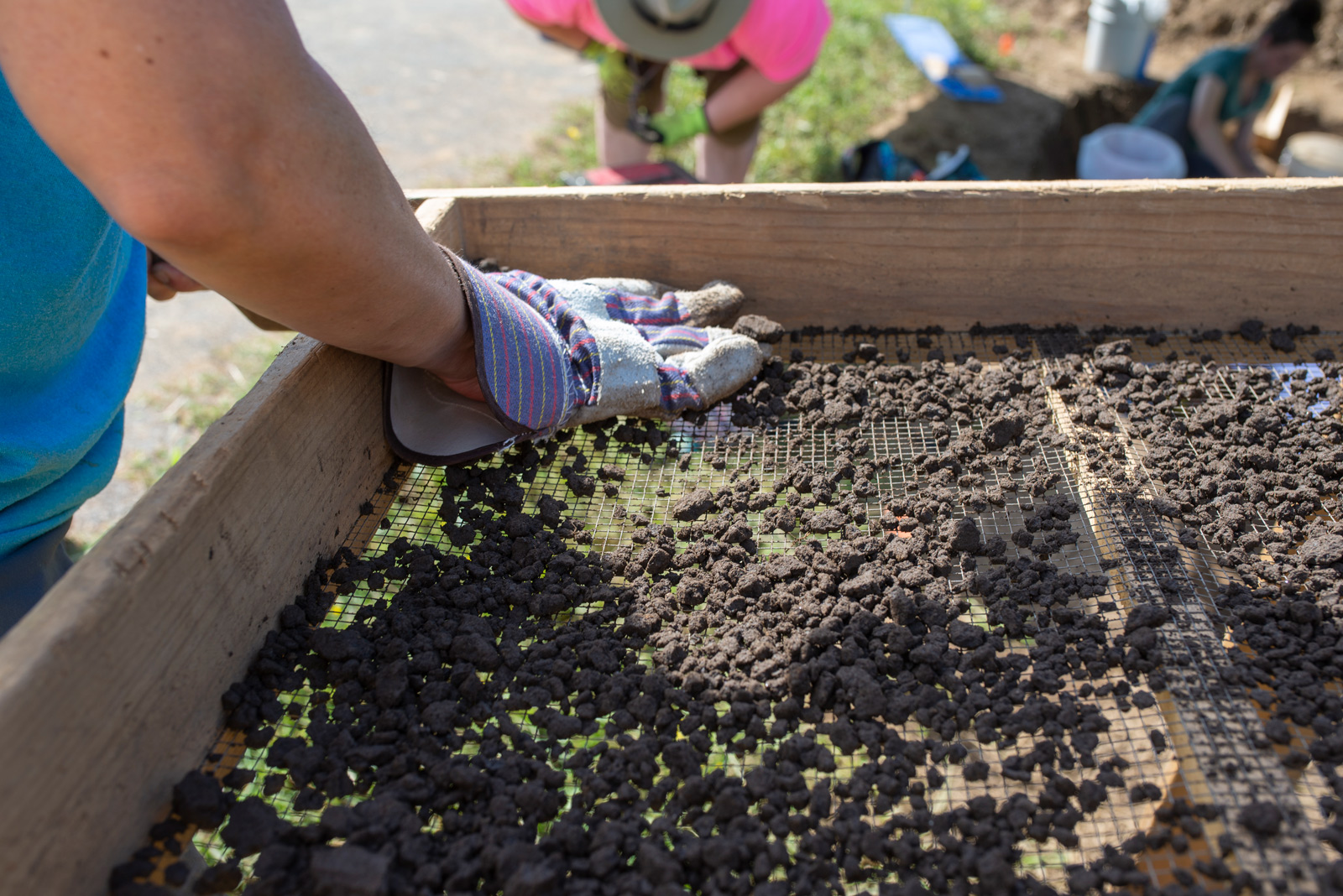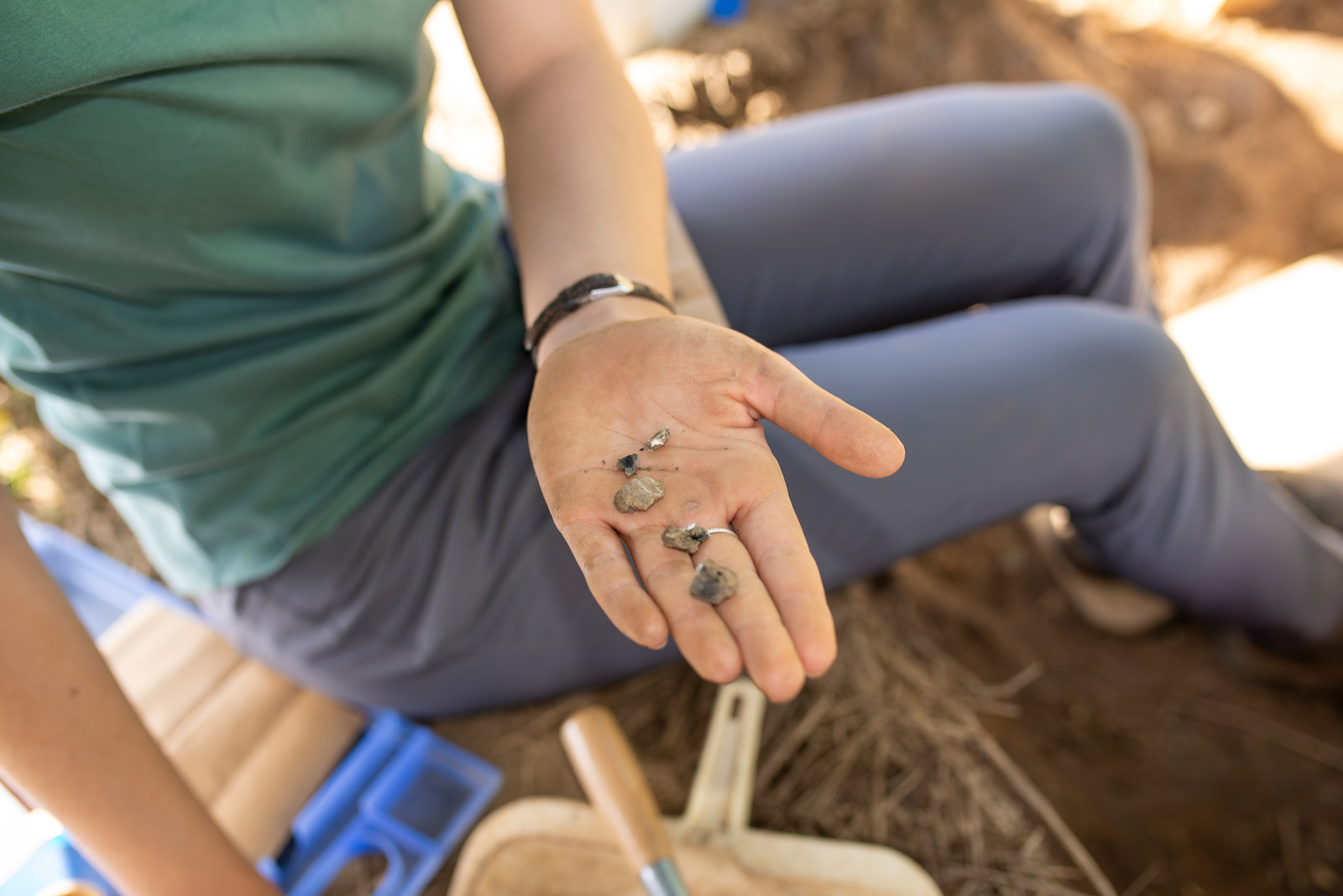News & Events
Uncovering the Past: UT Knoxville Students Dig in at Research Park
By Jennifer Sicking
KNOXVILLE – Slowly but steadily working their ways centimeter by centimeter down through the dirt and clay, UT Knoxville students unearthed pottery sherds, burned bones and mussel shells along with rocks fractured by cooking fires.
Each piece linked back almost 3,000 years ago to a people who lived along the curves of the Tennessee River during the Early Woodland time period, between 1,000 to 200 B.C. The land—now the University of Tennessee Research Park at Cherokee Farm—tells the story of a people in transition.

Kandace Hollenbach, UT Knoxville assistant professor of anthropology and associate curator of paleoethnobotany at the McClung Museum, takes notes while Hayley Reynolds, UT Knoxville junior anthropology major and Chris Griffith, senior anthropology major, work one of the dig sites. Photo by Sam Thomas
“At that time, they’re not fully sedentary people,” said Kandace Hollenbach, UT Knoxville assistant professor of anthropology and associate curator of paleoethnobotany at the McClung Museum. “But for at least a portion of the year, probably springtime to fall, they were living mostly in one place.”
And in that one place they left behind their broken waste, the refuse of burned bones and broken pottery and flint chips. They also left behind traces of the plants they planted and harvested, growing and taming for their food uses.

Kandace Hollenbach, UT Knoxville assistant professor of anthropology and associate curator of paleoethnobotany at the McClung Museum, screens the dirt from the sites to try to find pottery sherds, burned bones or other small items left behind in the soil. Photo by Jennifer Sicking
The Eastern United States, including East Tennessee, is one of about 10 locations in the world where the people independently domesticated plants. In East Tennessee, the plants included squash and sunflowers. Other such areas include the Fertile Crescent in the Middle East where they learned to grow wheat and barley or in the Andes Mountains in South America where they grew potatoes and quinoa.
“It’s cool to be somewhere where we have this,” said Allison Fowler, a senior anthropology major.
As they move through the layers, Hollenbach and the students also recover seeds and charcoal.
“Our main purpose to be out here is to collect plant remains so that we can look at the question: how are people farming and living along this stretch of the river,” Hollenbach said.
The close proximity to the UT Knoxville campus also allows students to easily get real experience of working in the field.

Allison Fowler, senior anthropology major, shows pieces of burned bones uncovered at the site. Photo by Jennifer Sicking
“It’s giving me the experience I need to go on my merry way after school,” said Victoria Juarez, who graduates in August with a degree in anthropology. During the field school, she learned how to fill out forms and to use the floatation technique. “Classes teach you that have to record everything, but it’s different when you have to do it.”
But there’s another aspect—the past being brought into the present.
“Digging up what hasn’t been seen in 1,000 years or longer is the fun aspect,” Fowler said.
And it gives them their first experience with a possible career in archeology.
“I wanted to do something like this since I played in the dirt when I was young,” said Sara Killion, a junior. “I’m doing archaeology and that’s cool.”
Video: